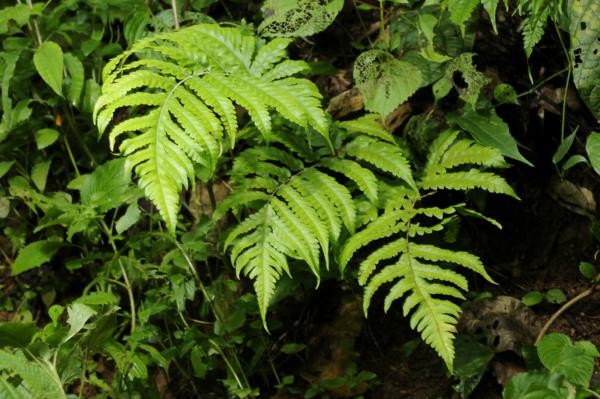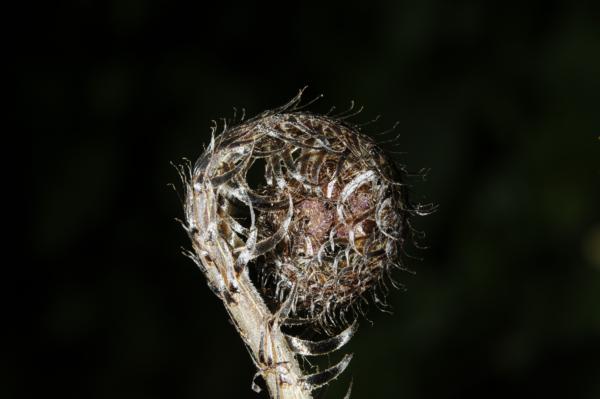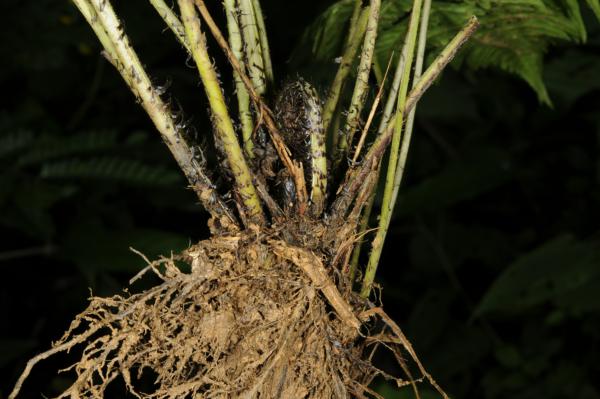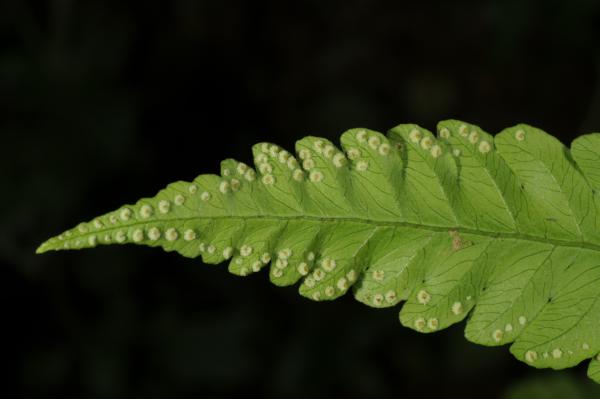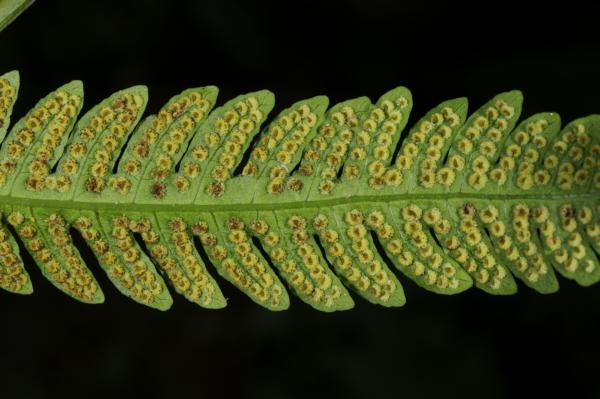
Tectaria fuscipes (Wall. ex Bedd.) C.Chr.
Family
Tectariaceae
Nomenclature
Tectaria fuscipes (Wall. ex Bedd.) C.Chr., Contr. U.S. Natl. Herb. 26: 290. 1931; Ching, Sinensia 2: 14. 1931; Tagawa & K.Iwats., SouthE Asian Stud. 5: 97. 1967; Tagawa & K.Iwats., Fl. Thailand 3: 365. 1988; Holttum, Fl. Males., Ser. II, Pterid. 2: 48. 1991; Boonkerd & Pollawatn, Pterid. Thailand: 213. 2000. – Aspidium fuscipes Wall. ex Bedd., Suppl. Ferns Brit. Ind.: 15: t 366. 1876. – Lastrea fuscipes (Wall. ex Bedd.) T.Moore ex Bedd., Handb. Ferns Brit. India: 243. 1883. – Ctenitopsis fuscipes (Wall. ex Bedd.) C.Chr & Tardieu, Notul. Syst. 7: 87. 1938; Tardieu & C.Chr., Fl. Indo-Chine 7(2): 354. 1941; Ching, Bull. Fan Mem. Inst. Biol. 8: 313. 1938. – Type: C.B.Clarke 7050, Cachar, Assam (K).
Pleocnemia membranifolia auct. non C.Presl: Bedd., Handb. Ferns Brit. India: 225, f. 115. 1883. – Sagenia membranifolia auct. non (C.Presl) Christ: Hosseus, Beih. Bot. Centr. 28(2): 366. 1911.
Description
Rhizome short, suberect to ascending, scales stiff, nearly black, about 10 by 1.8 mm, entire. Fronds dimorphic. Sterile frond: stipe 10–35 cm long, scaly on lower part, pubescent throughout, stramineous to darker, lamina bipinnatifid, oblong to oblong-lanceolate, acuminate at apex, broadest at base, up to 50 by 25 cm, basal pinnae asymmetrically oblong-subdeltoid, up to 15 by 12 cm, caudate-acuminate at apex, lobed to 4/5 way towards costa, bearing large basal basiscopic pinnules, middle lateral pinnae lanceolate, broadest at base, up to 13 by 4 cm, upper pinnae adnate at base and decurrent to the next to form indistinct apical portion, lobes oblong-subdeltoid, oblique, round at apex, entire, 7–9 mm broad, herbaceous, deep green, hairy on upper surface, costa pubescent, a row of costal areoles present. Fertile frond taller: stipe up to 56 cm long; lamina narrower, middle pinnae up to 3 cm wide, lobed to 4/5 way towards costa; veins all free. Sori terminal on acroscopic branches of veinlets, round, medial in ultimate segments or rather irregularly dispersed on lower surface of pinna, the largest about 1 mm diam.; indusia small, round-reniforme, short-hairy, persistent .
Distribution in Thailand
NORTHERN: Chiang Mai, Chiang Rai, Lampang, Tak, Phitsanulok, Nakhon Sawan; NORTH-EASTERN: Loei; SOUTH-WESTERN: Kanchanaburi; SOUTH-EASTERN: Chon Buri, Chanthaburi.
Wider Distribution
Sikkim to S China, east to Taiwan.
Ecology
On rather dry slopes in humus-rich areas in dense mixed or evergreen forests at medium altitudes (500–1200 m alt.).
Proposed IUCN Conservation Assessment
Least Concern (LC). This species is widespread and not under any known threat.
Notes
The venation is variable from free to anastomosing both in the sterile and the fertile frond, though the typical form is as described above.
Voucher specimens - Thailand
Watthana 3622, Tak (QBG).
Habit
Crozier
Rhizome and stipe bases
Frond tip and sori
Sori
Site hosted by the Royal Botanic Garden Edinburgh. Content managed by Stuart Lindsay, Gardens by the Bay, Singapore and David Middleton, Singapore Botanic Gardens. Last updated 24 January 2012
